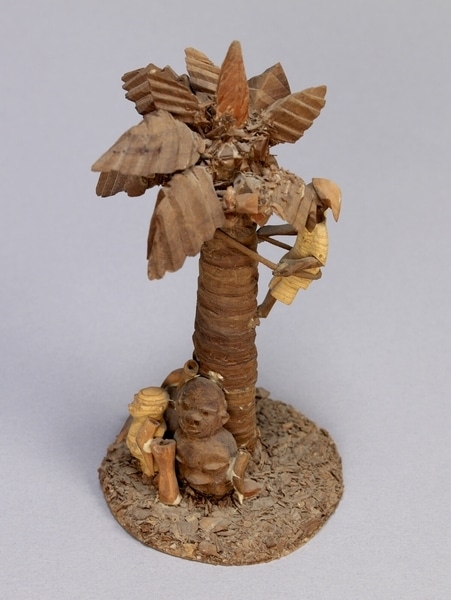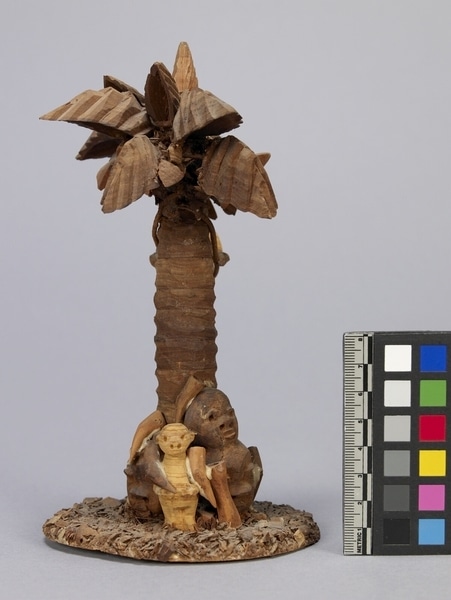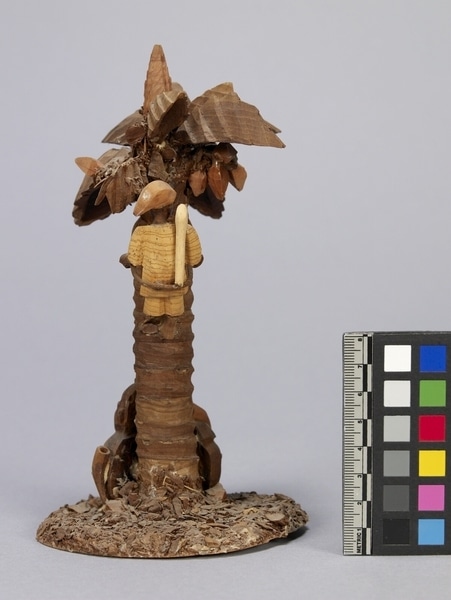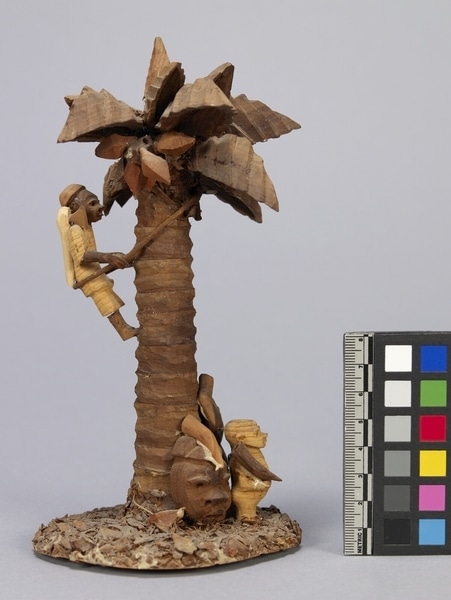Thorn Carving Item Number: Af372 from the MOA: University of British Columbia




Description
Palm tree on a wood base of variegated thorn bush carvings. Figure is being held by a rope while climbing the tree. At the base of the tree, there are three ritual masks, one figure, five horns, and one vessel. The figure climbing the tree is wearing a short-sleeved shirt, short trousers, and a soft pointed hat. An axe is resting on his right shoulder. The small figure at the base has a horn placed on either side. Three remaining horns are placed on the masks and a vessel is placed between the small figure and the largest mask. The base, tree, masks, head, limbs, and three horns are dark brown. Hats, two horns, and vessel are light red-brown. Small figure at the base, shirt, and trousers are light yellow-brown.
History Of Use
Thorn carvings are miniatures depicting scenes from Nigerian life. This type of carving began circa 1930. Thorns vary in size. They can be as large as 12.7 cm. long and 9.6 cm. wide. They are comparatively soft and easily carved. The light yellow-brown thorn and the dark brown thorn come from the Ata tree; the light red-brown thorn comes from Egun trees. The parts are glued together with viscous paste made from rice cooked with water. They are carved by men.
Cultural Context
craft; tourist art
Item History
- Made in Nigeria before 1972
- Collected during 1972
- Owned by Andrew Stewart and Jessie Stewart before February 8, 1980
- Received from Andrew Stewart (Donor) and Jessie Stewart (Donor) on February 8, 1980
What
- Name
- Thorn Carving
- Identification Number
- Af372
- Type of Item
- carving
- Material
- atum thorn, rice adhesive, stain, wood and egun thorn
- Manufacturing Technique
- carved and glued
- Overall
- height 19.7 cm, diameter 10.0 cm
Who
- Culture
- Yoruba
- Previous Owner
- Andrew Stewart and Jessie Stewart
- Received from
- Andrew Stewart (Donor) and Jessie Stewart (Donor)
Where
- Holding Institution
- MOA: University of British Columbia
- Made in
- Nigeria
When
- Creation Date
- before 1972
- Collection Date
- during 1972
- Ownership Date
- before February 8, 1980
- Acquisition Date
- on February 8, 1980
Other
- Item Classes
- carvings & sculpture
- Condition
- poor
- Accession Number
- 0590/0058